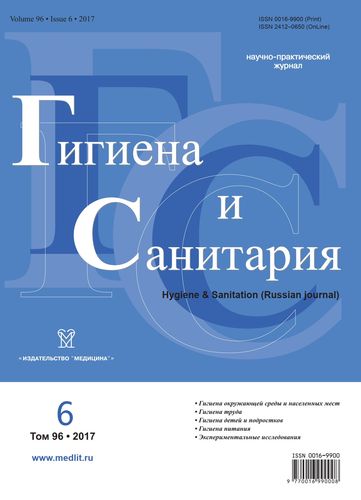The application of the factor analysis in the study of the epidemic process of acute intestinal infections
- Authors: Malysh N.G.1, Doan S.I.2
-
Affiliations:
- Sumy State University
- Kyiv Medical University
- Issue: Vol 96, No 6 (2017)
- Pages: 519-523
- Section: ENVIRONMENTAL HYGIENE
- Published: 21.10.2020
- URL: https://rjsocmed.com/0016-9900/article/view/640769
- DOI: https://doi.org/10.47470/0016-9900-2017-96-6-519-523
- ID: 640769
Cite item
Full Text
Abstract
Acute intestinal infections are referred to diseases of the great social and economic significance, consistently being the second in the structure of infectious incidence rate and death rate in the world. Elements of the parasitic system are strictly determined, but its quantity, quality, condition are constantly changing. The purpose of this paper was to reveal messengers and prerequisites of the activation of the epidemic process of acute intestinal infections in the Sumy region (Ukraine) with the use of the factor analysis. In 2005–2014 the decline of the incidence rate of shigellosis (from 42.3 to 15 per 100 thousand pop.), the gain in salmonellosis incidence (from 13.0 to 16.4 for 100 thousand pop.) were determined. Incidence rates of acute intestinal infections caused by other specified agents, including those of undetermined etiology, foodborne diseases were stable, having no tendency to reduce (140.3-163.4 for 100 thousand pop.). Natural and social factors indirectly influenced on the intensity of epidemic process of diarrheal infections that seem to be background for complication of epidemiological situation. Direct correlative relationships (p<0.05) were established between the dynamics of salmonellosis incidence rate and ambient temperature rates, rainfall amount, rates of natural and migratory movement, shigellosis and number, population density (per 1 km2), acute intestinal infections of specified etiology, foodborne diseases and ambient temperature. Messengers of the activation of the shigellosis epidemiological process increase in Shigella carriers that determines the rate among decreed contingent, salmonellosis — atypical samples of meat cooking at public catering enterprises (р<0.05).
About the authors
Nina G. Malysh
Sumy State University
Author for correspondence.
Email: ninamalysh@mail.ru
Ph.D., Associate Professor of the department of infectious diseases and epidemiology Sumy State University, Sumy, 40000, Ukraine.
у-mail: ninamalysh@mail.ru
UkraineS. I. Doan
Kyiv Medical University
Email: noemail@neicon.ru
Ukraine
References
- Malyy V.P. General characteristics of intestinal infections. Klіnіchna іmunologіya. Alergologіya. Іnfektologіya. 2010; 7 (36): 14–32. (in Ukrainian)
- Malysh N.G., Kholodilo E.V., Doan S.I., Chemich O.N., Poddubnaya A.I. Nosological structure of acute intestinal infections. Endogenous risk factors. Immunopatologiya, allergologiya, infektologiya. 2015; 3 (1): 40–6. (in Russian)
- Verdier J., Luedde T, Sellge G. Biliary Mucosal Barrier and Microbiome. Viszeralmedizin. 2015; 31 (3): 156–61.
- Lyalikov S.A., Baygot S.I., Sorokopyt Z.V., Rovbut’ T.I., Gavrilik L.L., Tomchik N.V. et al. Epidemiology of eco-dependent diseases in the Grodno region. Zhurnal Grodnenskogo gosudarstvennogo meditsinskogo universiteta. 2008; 3 (1): 84–7. (in Russian)
- Fridman K.V., Kryukova T.V. Urbanization is a risk factor for health. Gigiena i sanitariya. 2015; 94 (1): 8–12.
Supplementary files









